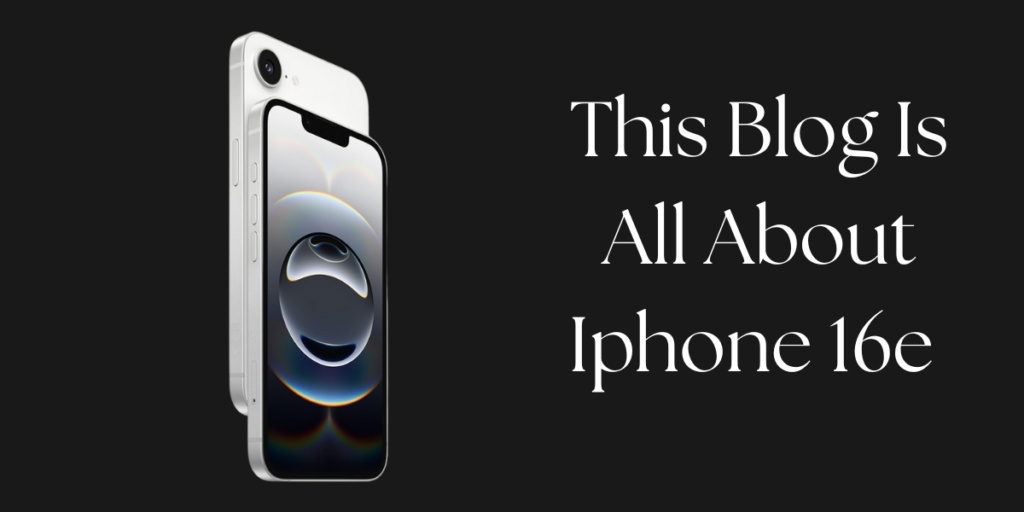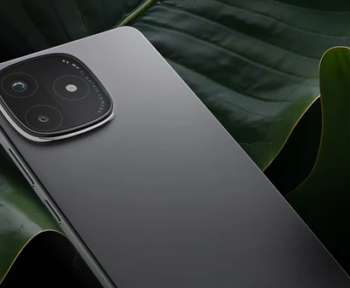
The iPhone 16e is Apple’s entry‑level model in the iPhone 16 series, officially announced on February 19, 2025 and released on February 28, 2025 The Australian+15Wikipedia+15Apple+15. Priced at $599, it’s positioned as a modern alternative to the SE line, blending the solid body of the iPhone 14 with the powerful internals of the 16 series The Guardian+1The Verge+1. Despite lacking some high-end features, its value lies in delivering essential iPhone experience at a lower price.
🎨 Design & Build
- Form & feel: The iPhone 16e features an aerospace-grade aluminum frame and a matte glass back, echoing the design of the iPhone 13/14 The Guardian.
- Colors: Available in sleek Black and White, with minimalist styling AT&T+1YouTube+1.
- Front design: Includes a classic notch (unlike the Dynamic Island in higher models) housing Face ID hardware Reddit+10Wikipedia+10The Verge+10.
- Durability: Ceramic Shield front glass, IP68 water and dust resistance (up to 6 m for 30 minutes) Amazon+3LOS40+3The Guardian+3.
- Port: Swapped the Lightning for USB‑C, supporting universal charging across Apple devices Wikipedia+14Apple+14Wikipedia+14.
- Button: Introduced the Action Button, replacing the mute switch, letting users trigger Apple Intelligence or launch apps AT&T+7Wikipedia+7Wikipedia+7.
🎨 Display & Audio
- Screen: 6.1‑inch Super Retina XDR OLED display, 460 PPI, HDR10 and Dolby Vision support Wikipedia+1The Guardian+1.
- Refresh rate: Standard 60 Hz (not 120 Hz like some competitors) Reddit.
- Visuals are crisp and vivid—ideal for media consumption and gaming.
🚀 Performance & Chipset
- Chip: Powered by the A18 SoC with a 6‑core CPU and 4‑core GPU (one less GPU core than iPhone 16) Times of India+13Wikipedia+13Wikipedia+13.
- Memory & storage: 8 GB RAM, available in 128/256/512 GB configurations Wikipedia+1Amazon+1.
- Benchmarks: Offers ~80% faster CPU and ~70% faster GPU vs iPhone 11, making it snappy for everyday tasks Wikipedia+5Wikipedia+5Wikipedia+5.
- Apple Intelligence: Built-in AI features run smoothly thanks to the A18’s 35 TOPS Neural Engine AT&T+5Apple+5Wikipedia+5.
🔋 Battery & Connectivity
- Battery life: Up to 26 hours of video playback—about 4–13 hours longer than previous SE models Apple+1Wikipedia+1.
- Modem: First iPhone to use Apple’s own C1 modem (supports sub‑6 GHz 5G, no mmWave), which is energy-efficient Apple+3Wikipedia+3Wikipedia+3.
- Other wireless: 5G, Wi‑Fi 6 (no Wi‑Fi 7), Bluetooth 5.3, NFC, and satellite support for emergency SOS and messaging .
- Charging: USB‑C wired and Qi wireless (7.5 W) charging—no MagSafe The Guardian+2Wikipedia+2The Verge+2.
📷 Camera Quality
- Rear: Single 48 MP Fusion camera with optical 2× zoom Navbharat Times+9Wikipedia+9The Australian+9.
- Front: 12 MP TrueDepth camera.
- Video: 4K up to 60 fps, Dolby Vision, spatial audio, and wind noise reduction Wikipedia+1Apple+1.
- Features: Includes Smart HDR 5, Photonic Engine, Deep Fusion, Night Mode, portrait mode for human subjects only Wikipedia+1Wikipedia+1.
- Missing: No ultrawide camera, macro mode, Cinematic or Action video modes .
🧠 Software & Apple Intelligence
- Runs iOS 18.3+ with long-term support Apple+2Wikipedia+2Wikipedia+2.
- Apple Intelligence features:
- Visual Intelligence via Action Button
- Writing tools, text summarization, Genmoji creation
- Clean Up photo background removal and Image Playground sketch to polished images TechRadarThe Guardian+5Apple+5Wikipedia+5.
- Siri improvements: Richer language understanding and integration with ChatGPT for smarter responses Apple+1Wikipedia+1.
- Privacy: AI tasks mostly on-device with Private Cloud Compute—your data stays private Apple.
🧩 Pros & Cons
✅ Pros
- Most affordable brand-new iPhone at $599 The Guardian+1TechRadar+1.
- Great battery life for its size.
- Powerful A18 chip and Apple Intelligence features.
- Durable design and IP68 rating.
- USB‑C gives modern connectivity.
- Compact 6.1″ size is easy to carry.
❌ Cons
- No MagSafe, ultrawide camera, or Wi‑Fi 7 Verizon+2Apple+2Amazon+2Verizon+14The Verge+14AT&T+14Wikipedia+3Wikipedia+3Amazon+3LOS40+3The Guardian+3Apple+3.
- Single camera may disappoint photo enthusiasts The Verge+1The Guardian+1.
- No UWB or advanced connectivity.
- 60 Hz display feels less smooth than flagship screens The Guardian+1Wikipedia+1Reddit.
- Price may feel high relative to missing features The Guardian.
🏆 How It Compares
- iPhone 16 ($799): Adds ultrawide, MagSafe, 120 Hz, Camera Control button. 16e skips these.
- iPhone 15 (discounted): Offers MagSafe and dual cameras, but shorter battery and no A18/AI AT&T+10TechRadar+10The Guardian+10.
- Samsung Galaxy A56 / Pixel 8a: Cheaper, bigger screen, but no iOS or Apple ecosystem .
👥 Who Should Buy It?
The iPhone 16e is perfect for:
- First-time iPhone buyers or those moving from older iPhones (14 or earlier).
- Users needing reliable performance and great battery life.
- Fans of Apple Intelligence features—custom emojis, smart editing, and writing tools.
- People who don’t care about MagSafe, ultrawide cameras, or high refresh-rate screens.
Avoid if you:
- Rely on MagSafe accessories.
- Want top-tier photography or gaming visuals.
- Prefer flagship hardware like Wi‑Fi 7 or Camera Control buttons.
📈 Reviews & Reception
- TechRadar found that after two weeks, the 16e’s battery and AI tools beat the iPhone 15 for most users Verizon+14TechRadar+14Apple+14AppleThe Verge.
- The Verge labeled it solid but pointed out missing features and its $599 price as a possible mismatch .
- The Guardian praised its performance and compact build, while noting compromises like single-camera and no MagSafe The Guardian.
- Wired and The Australian echoed similar views—good but slightly overpriced, with standout battery life and durability Wired+1The Australian+1.
🛍️ Final Verdict
The iPhone 16e offers a compelling package for users who value battery life, durability, modern performance, and AI tools—all at a lower price than flagship models. If you’re okay skipping extras like MagSafe, ultrawide camera, and high refresh rates, it’s the best-value new iPhone currently at $599.
However, if you care deeply about camera versatility or wireless accessories, you might want to step up to the standard iPhone 16 or consider other options.
Should You Buy It?
- Yes if you want a reliable, long-lasting, and capable new iPhone without breaking the bank.
- No if you need MagSafe, ultrawide or macro photos, or ultra-smooth high-refresh display.





